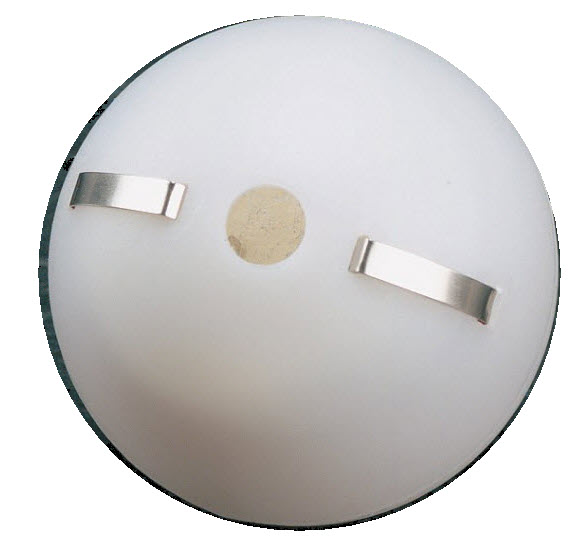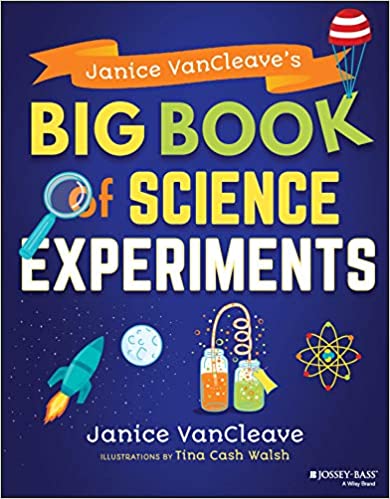A “Mystery Ball” is used to demonstrates three types of energy:
- electric energy
- light energy
- sound energy
Objectives:
1. To describe the physical properties of the energy ball.
2. To identify the the types of energy produced by the Energy Ball: electric energy, light energy, and sound energy.
3. To describe the difference between electric insulators and electric conductors.
4. To distinguish between an open and closed circuit diagram.
Material–Mystery Ball, AKA Energy Ball can be purchased at www.TeacherSource.com
Engage: Observe Physical Properties of the Mystery Ball
1. Identify the ball as a Mystery Ball so that students will not be given any clues that the ball produces energy. Inform students to observe the ball and make mental notes of the ball’s physical properties.
Move the ball in your hand so all sides of the ball are visible. Walk around the room to give kids a close up view. DO NOT touch both of the metal terminals on the ball at the same time. As you display the ball ask for physical property descriptions. Give clues only if the following properties are not provided.
- color-white;
- shape-ball or spherical;
- size- ping-pong ball;
- other distinguishing features: 1-small hole with two silver metal strips on either side of the hole
2. Inform students that you are going to do an experiment with the mystery ball. When you say, “The experiment starts now.” they are to observe everything you do and make note of what happens. When the experiment is over you will it announce it by saying, “The experiment stops now.”
Demonstration Experiment:What to Do:
- Spread a small amount of hand lotion on your hands.
- Hold the mystery ball in one hand and touch the metal terminals on the ball with the finger and thumb of your other hand.
- Raise and lower your index finger to turn the ball on and off.
ASK:
- What type of energy does the experiment demonstrate?
Ans. Light energy and sound energy is all they have observed but some may say electric energy. - What evidence confirms the answers given? Light–glowing bulb; Sound -buzzing
There is no direct evidence that electric energy has any part of the experiment. So, if electricity is not mentioned, don’t discuss it at this time. If electricity is given as an energy being demonstrated, reply that electricity is an interesting answer, and it might be the answer to what is happening. This can lean into introducing the next exploring part of the lesson.
Explore: How to “Turn On” the Energy Ball
Before kids start investigating ways to “turn on” the Energy Ball, tell them that the ball does not open.
Now is a good time to explain why you used lotion and make lotion available so that dry skin cells doesn’t affect their investigation.
In groups, allow kids to examine a Mystery Ball. After everyone has had a turn investigating the ball, discuss what they did to turn on the ball. Now it is time to talk about why the ball glows and buzzes.
Explain: Why Does the Mystery Ball Turn On?
Give kids the opportunity to tell why they think the energy ball flashes light and buzzes when the terminals are touched. Obviously something is inside the ball that produces electric energy.
Ask for ideas of what could fit inside the ball and produce electric energy. [Battery]
Most kids are familiar with the term “battery” and have know that they come in different shapes and sizes. But, you can remind them of the different kinds of batteries that are commonly used, such as batteries in cars, watches, cell phones, ipads, etc…
Now that the source of the electric energy is identified, identify parts that are responsible for light energy (bulb) and sound energy (buzzer).
Introduce the terms battery, bulb, buzzer, circuit, closed circuit, open circuit, conductor, electric current, insulator, and switch.
- A battery is the source of electric charges.
- A bulb emits light energy.
- A buzzer emits sound energy.
- An electric current is the flow of electric charges.
- A circuit is the path through which an electric current can travel.
- A closed circuit allows an electric current to flow in a loop.
- An open circuit has a break in the circuit path so that an electric current cannot continue moving.
- A conductor is a type of material, such as a metal wire, that allows an electric current to flow through it.
- An insulator is a type of material that tends to block the flow of an electric current.
- A switch is like a draw bridge that opens and closes the circuit path for an electric current.
Elaborate (Enrichment):
All the terms can be modeled by using kids as the conducting material (electric wire). First, hold the ball in your hand and ask someone to touch only one of the metal terminals on the ball as you touch the other terminal. Nothing is going to happen because their is an open circuit.
Now hold hands with your helper and the ball will be turned on. Yep! you have produced a closed circuit through which the electric current from the battery inside the ball can flow. This models a human-circuit.
ASK: Does the number of people in a human-circuit affect the flashing light and buzzing of the Energy Ball?
Instruct groups to discover on their own. Of course, they should first as a group write a hypothesis, then investigate by starting with two people in their human-circuit. Add one person at a time. After each addition determine if any change has been made in the brightness of the light flashes or loudness of the buzzing sound.
Emphasize that the electric energy from the ball is so small that it is safe, but they are never to experiment on their own with electric energy.
Evaluate:
1. Kids should be able to design a method for using the Energy Ball to classify materials as being a conductor or insulator. [Conductors allow an electric current to flow through them and insulators do not.]
One way is to place the material between two people in the human circuit. If the material is an insulator the circuit is complete and the ball flashes light and buzzes.
2. Kids should be able to define open and closed electric circuits.
3. Kids should be able to draw open and closed circuits or identify drawings as an open or closed circuit.
Big Book of Science Experiments
A book of fun informative experiments about astronomy, biology, chemistry, earth science, and physics.
(Paid Link)

